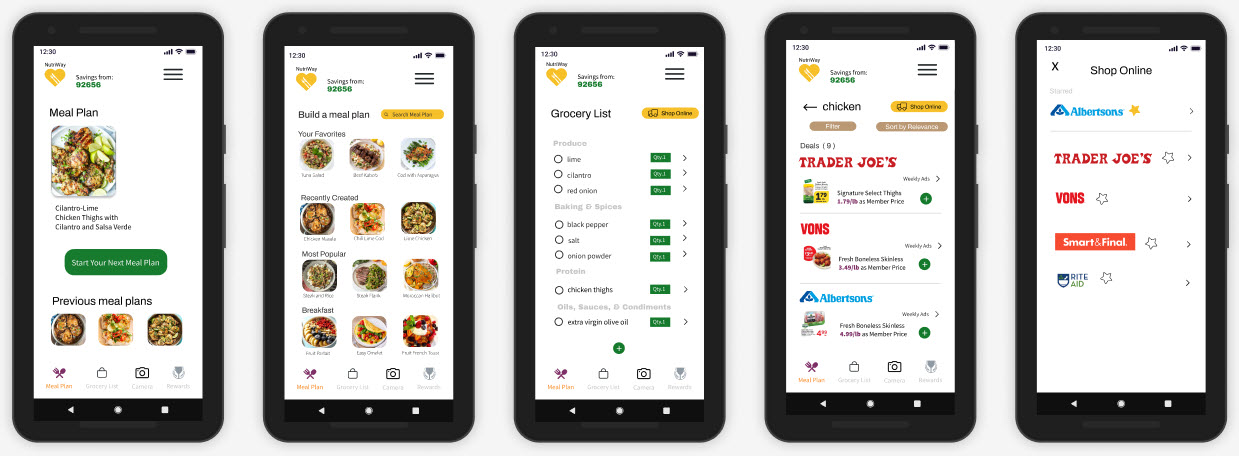
NutriWay Mobile App Case Study
- Product Designer: Phuong Lee
- Project: Personal Project
- Timeline 2 months (2024)
- Tools Used: Figma, Figma Jam, Figma Slides, Adobe Illustrator, Canva, Miro, Basamiq, WordPress
Overview
Prompt
Personal nutritionists can be costly, making it difficult for many individuals to receive tailored dietary advice and meal-planning assistance. Eating healthy is essential, but the expense of nutritious foods can be a barrier. NutriWay, our innovative mobile app, provides personalized meal planning and comparison shopping tools, making it easier to maintain a healthy diet without breaking the bank.
Design Process


Problem
How can we help individuals save money on their grocery bills while ensuring they have access to nutritious and personalized meal plans?
Objective
To provide users with a tool that assists in personalized meal planning and allows them to compare prices and make cost-effective choices, ultimately reducing their total grocery expenses.
User Goals:
- Save money on groceries.
- Access nutritious and personalized meal plans.
- Easily compare prices across different stores.
- Make informed decisions about their food purchases.
Market Analysis
SWOT Analysis
I compared three companies: Mealime, Flipp, and Fetch, and conducted a SWOT analysis for each by analyzing the strengths, weaknesses, Opportunities, and threats.
- Mealime specializes in personalized meal planning, offering user-friendly recipes and shopping lists tailored to dietary preferences. However, it lacks robust price comparison features, which can limit cost-saving opportunities for users.
- Flipp excels in price comparison and deal-finding, providing users with access to various discounts and circulars from local stores. Its strength lies in helping users save money, but it falls short in offering personalized meal planning and nutritional guidance.
- Fetch rewards users with points for purchasing specific brands and products, which can be redeemed for gift cards. While it incentivizes certain purchases, it doesn’t provide comprehensive meal planning or price comparison tools, limiting its utility for users seeking holistic cost-saving and dietary solutions.
By analyzing these competitors, we can identify opportunities for NutriWay to combine personalized meal planning with effective price comparison, creating a unique value proposition that addresses both nutritional needs and budget constraints.
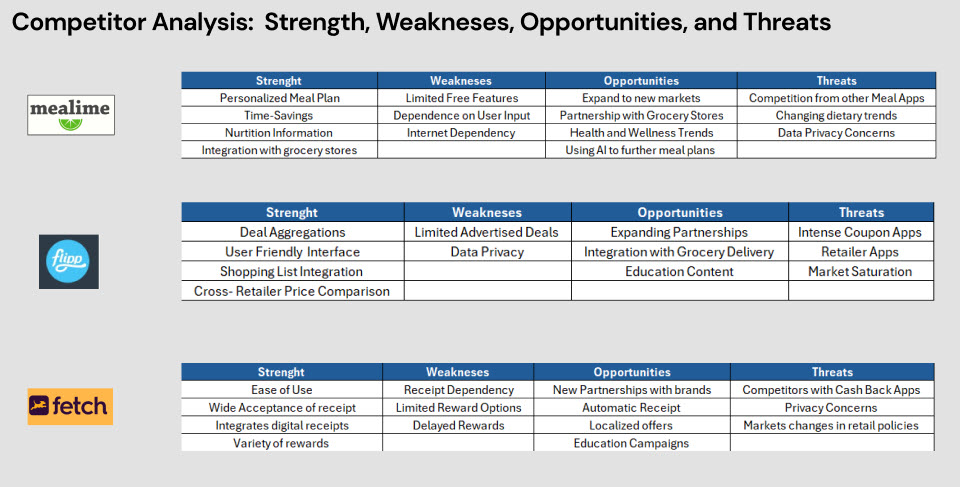

Business Model Canvas
To gain a comprehensive understanding of our business strategy and operations, I utilized a business model canvas. This tool allowed us to map out the key elements of our business, including:
- Key Partners: Identifying essential collaborators and alliances that will help drive our app’s success.
- Key Activities: Outlining the critical actions needed to deliver our value proposition and operate effectively.
- Value Proposition: Defining the unique benefits and solutions our app offers to meet user needs.
- Customer Relationships: Describing how we will interact with and support our users to foster loyalty and satisfaction.
- Customer Segments: Identifying and understanding our target audience to tailor our offerings accordingly.
- Channels: Determining the most effective ways to reach and engage with our customers.
- Key Resources: Highlighting the vital assets and resources required to deliver our value proposition.
- Cost Structure: Analyzing the costs involved in operating our business and delivering our service.
- Revenue Streams: Exploring the various ways our app will generate income and ensure financial sustainability.
Using the business model canvas, we can visualize the interconnected components of our business, identify potential challenges, and pinpoint opportunities for growth and innovation. This strategic overview is crucial for developing a robust and successful business model for NutriWay.
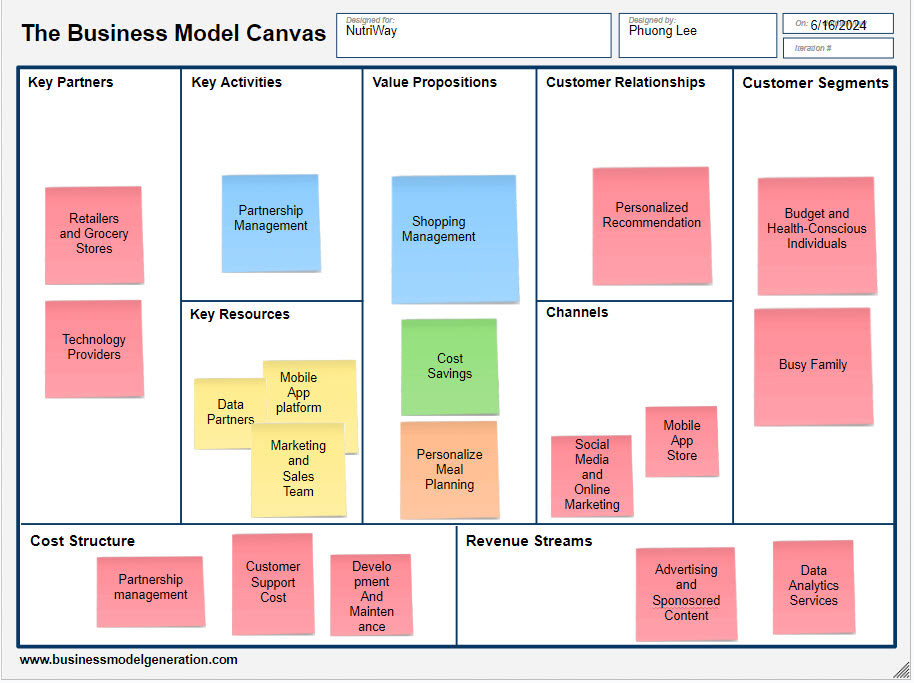

Personas
Sarah Thompson
Age 35
Occupation Marketing Manager
Family: Married with 2 kids
Location: Surbuan Area
Income: $75,000
Sarah is a busy working mom who manages her household and a full-time job. She is health-conscious and strives to provide nutritious meals for her family. Her husband has diabetes, which requires careful meal planning to manage his diet.
Goals and Expectations:
- Save money on groceries and household items.
- Plan healthy, nutritious meals that cater to her family’s dietary needs, including managing her husband’s diabetes.
- Ensure her family eats seasonally and sustainably.
- Find convenient ways to manage her shopping and meal planning amidst a busy schedule.


Mark Johnson
Age 37
Occupation: Software Developer
Single
Location: Urban
Income: $90,000 annually
Mark is a young professional who is very focused on maintaining a healthy lifestyle. He enjoys cooking and prefers to eat fresh, seasonal produce. With a busy work schedule, he seeks efficient ways to manage his grocery shopping and meal planning
Goals and Expectations
- Maintain a healthy diet with fresh, seasonal ingredients.
- Save money on groceries without compromising on quality.
- Discover new, healthy recipes that fit his lifestyle.
- Efficiently manage grocery shopping with minimal effort.


Journey Map
Sarah Johnson User Journey


Mark Johnson User Journey


Flow Map
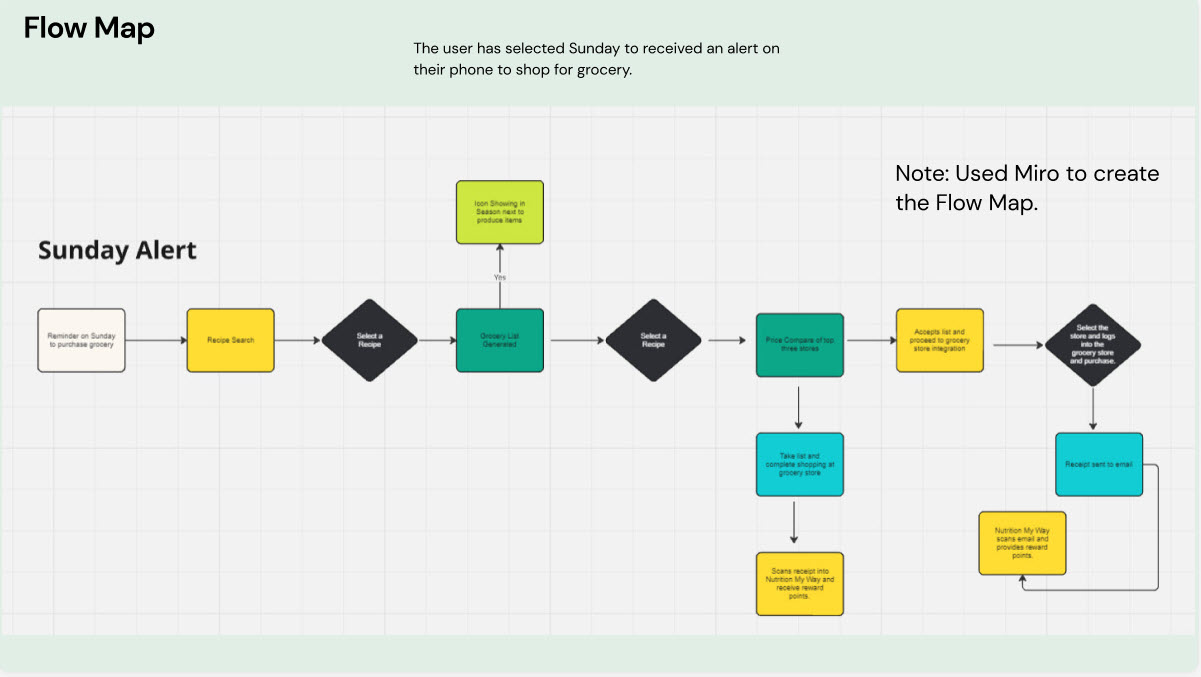

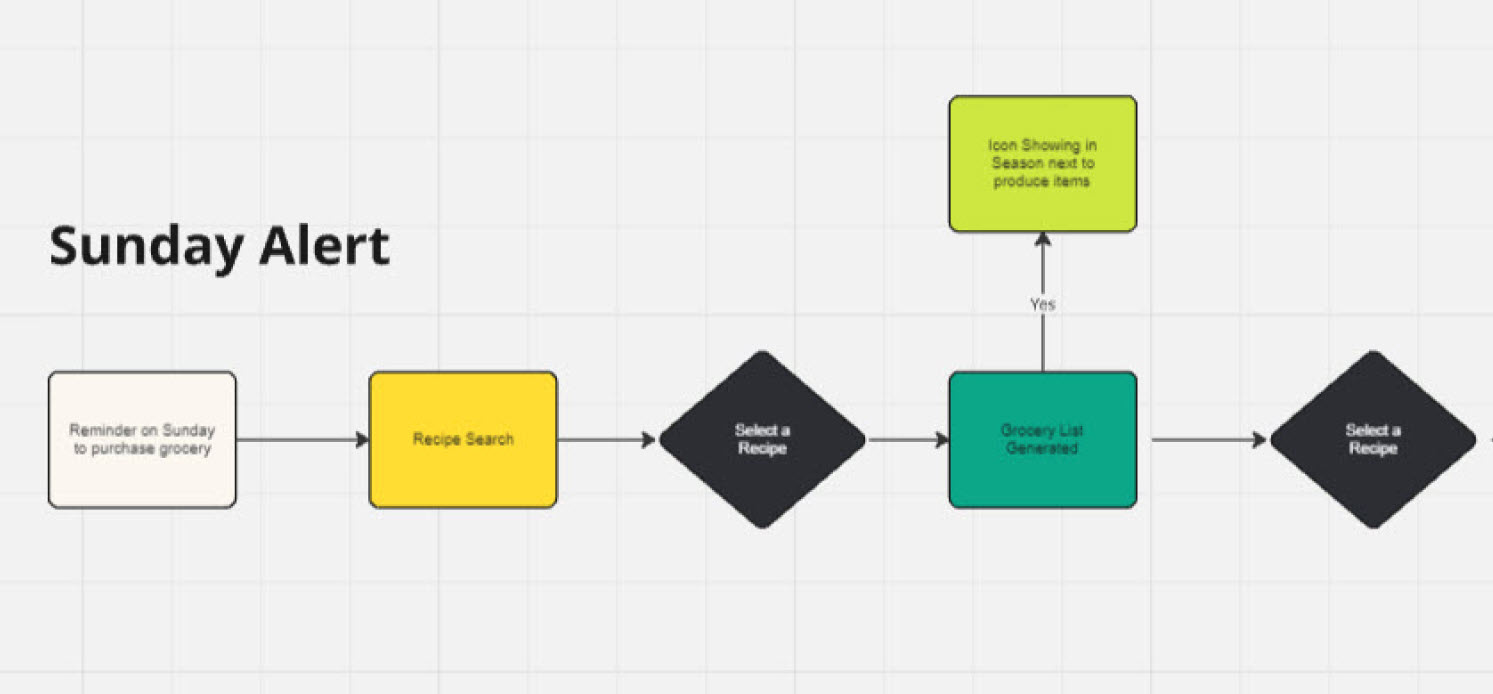

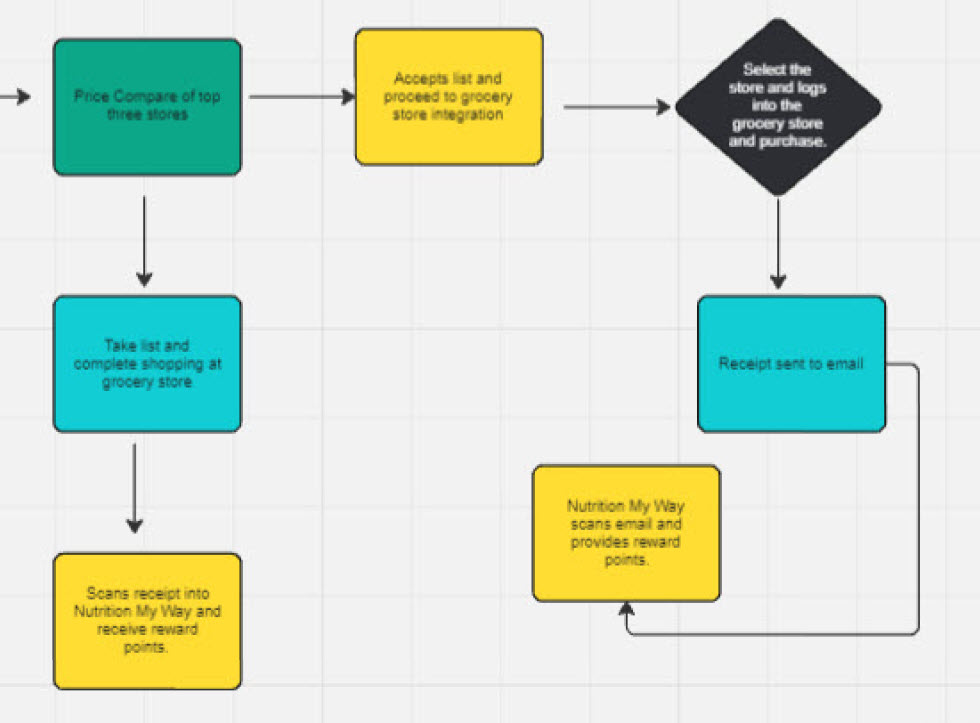

Prototype
Low-Fidelity Wireframes
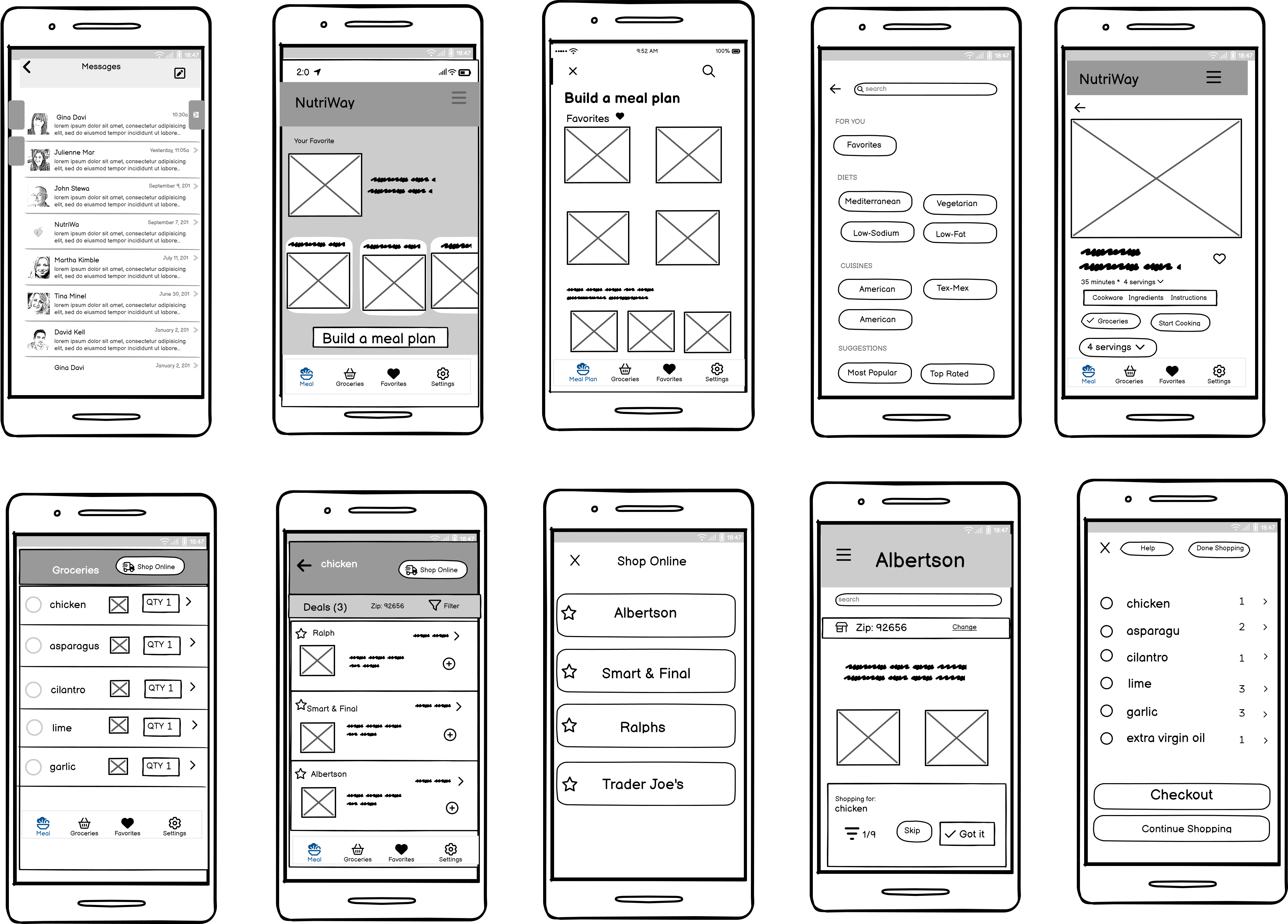

Design Concept
Visual Identity
Typography
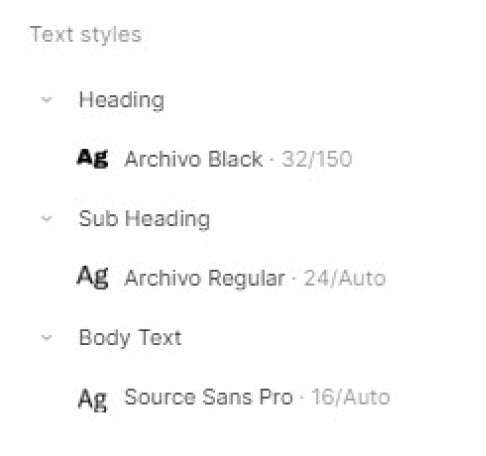

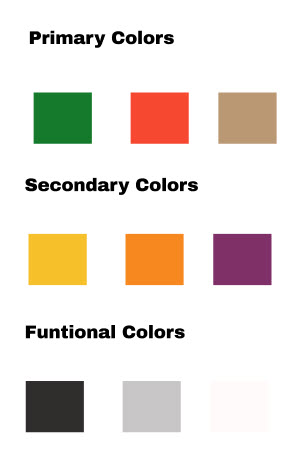

High-Fidelity Mockups
Design Solution
Mobile App Platform
To address the challenge of high costs associated with maintaining a healthy diet and the need for personalized meal planning, we have developed a high-fidelity mobile app, NutriWay. This solution integrates the following key features:
- Personalized Meal Planning: NutriWay offers tailored meal plans based on individual dietary preferences and nutritional needs, making it easier for users to follow a healthy eating regimen.
- Price Comparison: The app provides robust price comparison tools, allowing users to compare prices of ingredients across different stores and find the best deals, ultimately reducing grocery expenses.
- Cost-Saving Features: NutriWay helps users budget their grocery spending by highlighting cost-effective options and seasonal produce, ensuring that maintaining a healthy diet does not strain their finances.
- User-Friendly Interface: The app is designed with a user-friendly interface that simplifies meal planning and shopping, enhancing the overall user experience and making it accessible for everyone.
By combining personalized meal planning with effective price comparison, NutriWay addresses both the dietary and financial needs of our users. This comprehensive approach ensures that maintaining a healthy diet is both affordable and achievable.
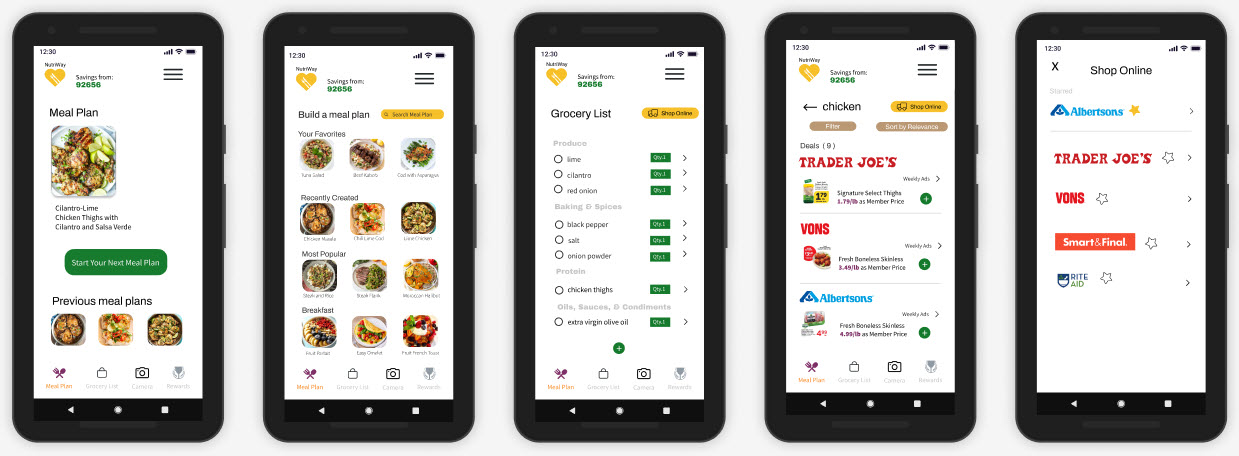

Reflections
Takeaway
In developing a health app focused on the human aspiration of immortality, I utilized a variety of design tools, including Figma, Figma Jam, Figma Slides, Adobe Illustrator, Canva, Miro, and Balsamiq. My design process began with identifying the problem and conducting thorough market research to understand user needs.
I then mapped the user journey to pinpoint key touchpoints and pain points. Using Balsamiq, I created low-fidelity wireframes to visualize the app’s layout. This was followed by iterative feedback and refinement, which led to the development of detailed high-fidelity mockups in Figma. Throughout this process, I incorporated collaborative ideation, brainstorming, and graphic design to ensure a comprehensive approach.
The key takeaway from this process is that a well-structured design methodology, supported by diverse tools and incorporating team feedback, can significantly enhance the effectiveness and appeal of a health app aimed at promoting longevity and incorporating price comparison to add value for users.
